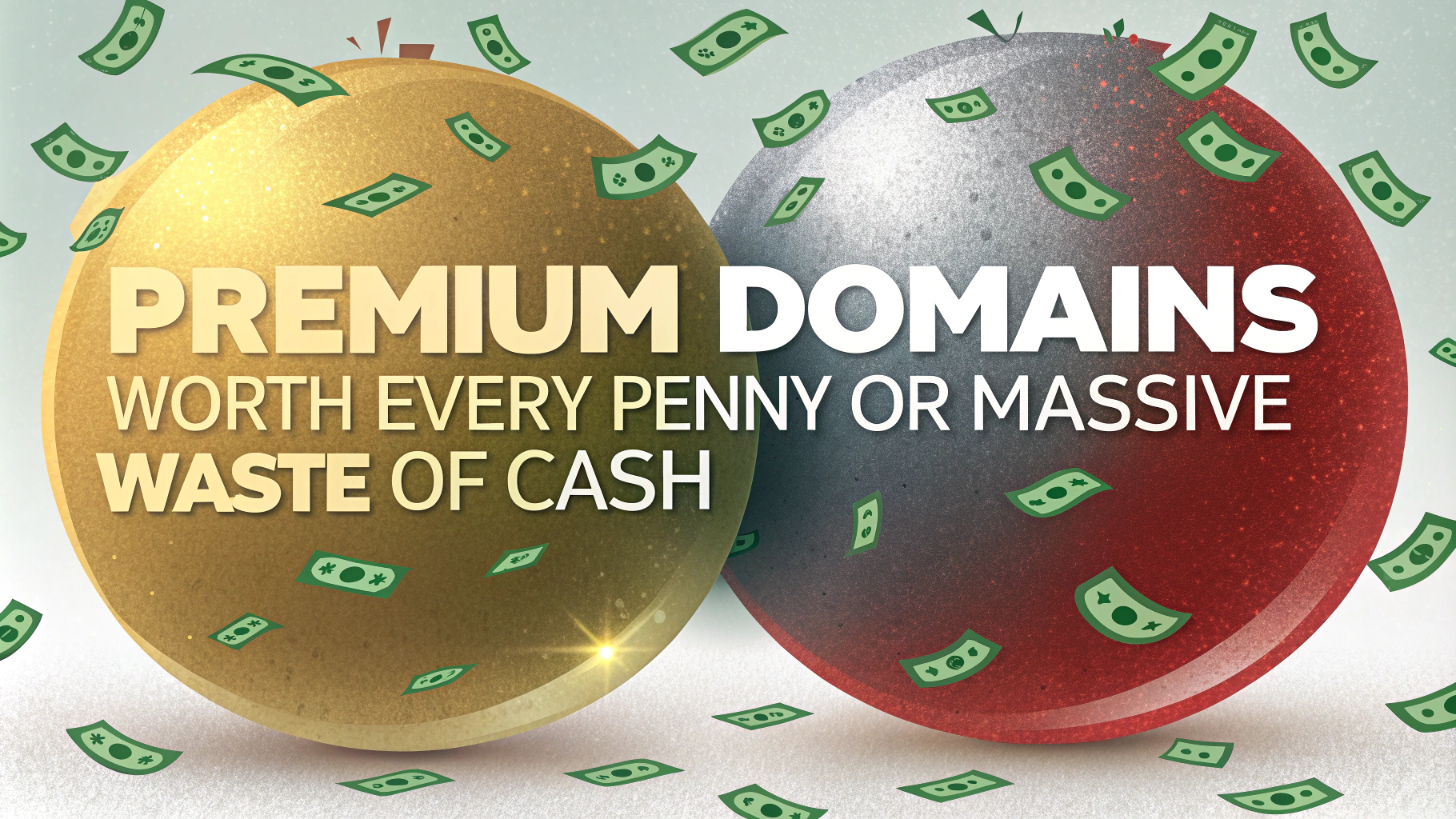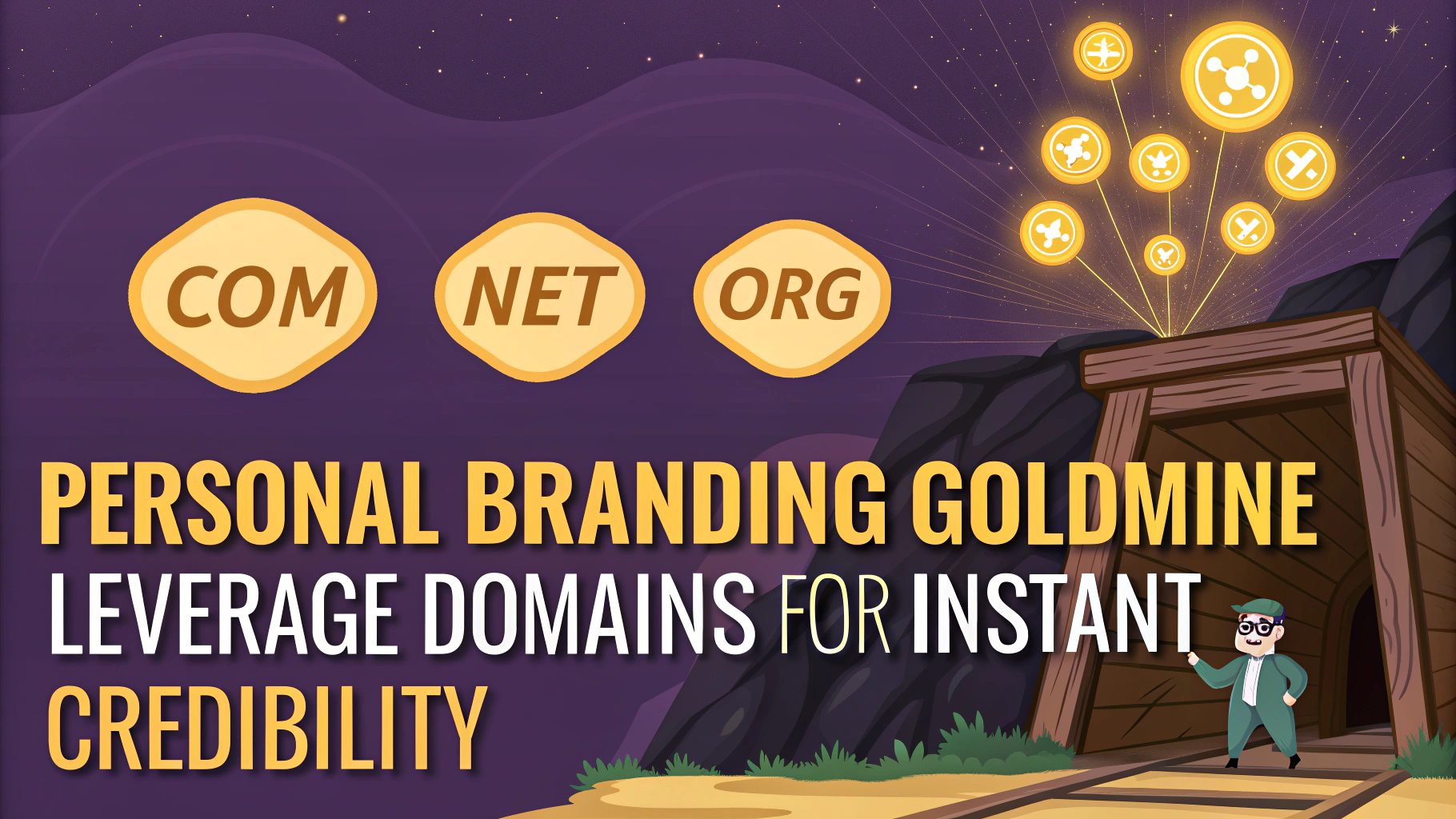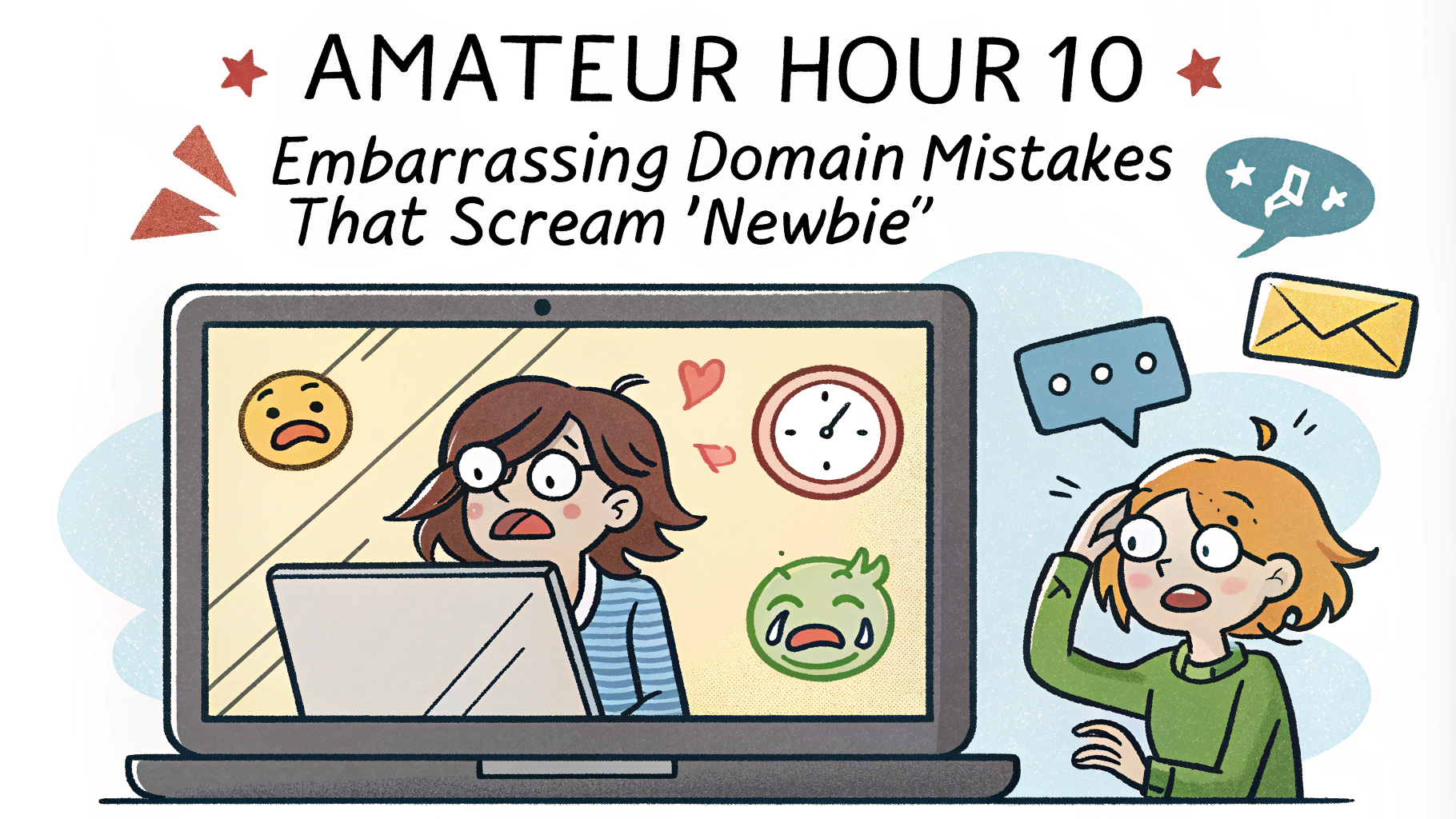Although mobile applications don’t technically need a website to operate and serve customers, it is essential for them — or the business behind them — to have a domain name that is associated with the app.
In this article, we take a look at why a domain is needed, what it’s used for, whether it should be the same name as the app and what’s the best extension for mobile developers to use.
If you’re just starting out to create a new iOS or Android app, or already have an ongoing operation (but don’t like your domain name), read on to learn more about the implications of an app developer’s domain name for branding, SEO, communications and much more.
Do Mobile Apps Even Need a Domain Name?
Compared to a web-based business or blog, website domains may not be as important for a mobile app that operates within the Apple or Android ecosystem.
That’s why plenty of app developers overlook the need to get the right domain name for their business.
All too often, a cheap domain that’s available is registered and used for functional purposes during the app development stage, without much thought for branding, marketing or user acquisition/retention.
The bottom line is that every mobile app should definitely have a domain name that is clearly linked to it so that users know how to connect with it outside of the app itself.
The two primary reasons being the app’s website and email address, both of which need a domain name.
Do iOS or Android Apps Need a Website?
Technically, mobile apps don’t need a website as they are independent, stand alone applications that are normally downloaded onto the user’s device.
However, they should have a website to establish a complementary presence on the web. This may be to provide additional content, support, community services or promotional activities to reach new users.
Depending on the nature of the app, it’s website could be an integral part of the app’s goal to offer users a comprehensive solution extending beyond mobile devices – such as WhatsApp’s web version.
Or, it could simply be a cool marketing site that shows up in Google for related searches and directs users to download the app at the relevant appstores.
For most apps, their website can be somewhere between a full-fledged web application and a basic landing page. There are lots of possibilities. And opportunities.
Can Apps use Gmail or the Developer’s Email?
Email addresses are the other key reason for an app to have a suitable domain name.
Even with in-app communications and support functionality that’s built within the app, there’s no avoiding the critical need for email.
Emails are far and wide reaching, carrying a product’s name (via the domain name) wherever it goes. Every app startup should capitalize on this powerful branding asset by getting the best possible domain.
After investing tremendous resources to build and promote an app, it is unfortunate to see some app owners using free or confusing email addresses that damage their brand instead of helping it thrive.
An exception to having a dedicated domain and email address with the app’s name is if the developer plans to release multiple apps/titles. In which case the strategy is to build up the developer’s brand name and hence use that as the primary focus.
How Important is an App’s Domain Name?
As we’ve discussed, a domain name is used for both an app’s website and its email address. This makes it a critical part of the app’s branding and identity, among other things.
For companies who intend to release multiple apps and concentrate on establishing the developer or publishers name, the individual app’s domain name may not be as significant. But it is still important to own it for brand protection, just like how Apple owns iphone.com and forwards it to apple.com/iphone/
In comparison, startups with only one “killer” app as its focus should get the best possible (exact match) domain, as the app’s domain name is a key part of the marketing efforts, the brand, the identity and possibly the product.
What’s the Best Domain Extension for an App?
Although there are a range of interesting domain extensions that may be candidates for your app’s domain name and website, it is normally better to stick with a dot com if possible.
It is the most widely used and recognized domain. Lots of people automatically go to it when trying to navigate to a website. By using a non .com, you’re taking the risk that potential customers have difficulty finding your site.
Yes, you could just rely on being found via Google. But that runs the risk of competitors grabbing your user via paid ads, or losing your audience to confusingly similar brands, apps and shiny objects.
Note: Even if one of the more exotic domain extensions is a good fit as your app’s domain, you should still try to acquire the .com to prevent anyone else from owning it. You can then forward traffic from the .com to your site, so that prospects who go to the dot com version of your name end up at the correct place.
App’s Exact Match .com is Taken Already
With over 160 million .com domains registered, your app’s name is most likely taken already. So what should you do when your domain registrar returns with a ‘taken’ or ‘not available’?
You should try to acquire it if you can.
The first step is to see if it’s being used. Type it into your browser. If there’s an active website on it representing a thriving business, that’s a problem.
If nothing shows up or it’s a parking page full of ads, that’s good, because there’s a chance of buying it. If there’s a message saying “this domain is/may be for sale” – you’re in luck.
Try not to waste time getting frustrated that some domain squatter has registered the domain you want. Being emotional may cloud your judgement and lead to irrational decisions.
Just focus on the task at hand, which is to secure your .com successfully and at as low a price as possible.
How much to Spend on the App’s Domain?
Before reaching out to try and buy the domain, it’s important to have a plan about how much you’re willing to spend and how you’ll approach the negotiations.
Although it may be tempting, don’t start with a ridiculously low offer that’s under $100. This may just result in a similarly way out offer that’s much higher than the owner would sell for.
Depending on the quality of the name, a fair price may be in the $2,000 to $5,000 range, or if you’ve got a popular word, phrase, keyword combination, you may be looking at a price above $10,000.
It’s unlikely you’ll get the name for under $1,000. But you can always share an initial offer in that range. Of course it totally depends on the name itself. If it’s a high quality premium, the owner may not even bother with a reply.
If the domain has a price on the for sale page, that’s a useful reference. Note that final sale prices for domains are normally some way from the initial offers, so tread carefully with your counter offers, but don’t be ridiculous and look like an amateur timewaster.
Your maximum amount to pay will depend on your budget and the financial situation for your app’s company. Pre-funding, you may need to conserve most of the funds for development.
Startups often go with a cheaper option first and then use some of their funding proceeds to upgrade their domain.
Add Modifying Word for a .com Domain
There are times when it’s simply not possible to get the perfect “exact match” .com domain for your app – either the price asked is way too much or the domain is simply not for sale.
But if you’re still determined to use a dotcom because no other extension is acceptable. What should you do?
A good solution is to add a modifying word as a prefix or suffix and the resulting .com domain should be available to register (unless your app’s name only consists of a common single word).
For example, if your app is called TripHunter, the exact match triphunter.com will definitely be registered already. But you can add a prefix such as “get” and gettriphunter.com should be available. Or you can register triphunterapp.com by adding an “app” suffix.
However, if your app is called Thrive — a very popular name for many products — thrive.com, getthrive.com and thriveapp.com will all be registered already.
Here’s a list of prefixes and suffixes to combine with your app’s name to create a .com domain name that will hopefully be available to register.
- Prefixes: get, try, play, e, i, i download
- Suffixes: app, download, now
Good Domain Extensions for Mobile Apps
Can’t get the perfect .com and don’t want to compromise with any modifying words to have an inferior name?
If you prefer to use a different domain extension for your app rather than adding another word to the name itself, these are a number of domain endings to consider.
Each of these have a unique characteristic that will provide an innovative feel to your app’s brand:
- .app domain extension – if your app’s dot com is already taken, an obvious option is to build your site on the dot app domain extension. This new gTLD was established with the intention of specifically targeting apps.
- .io domain extension – dot io domains have been very popular with tech startups. If your app has a relatively geeky audience, this may be a potential domain suffix that will click with your users. If you’re targeting the average consumer, it may not be as good a fit.
- .net domain extension – the dot net extension certainly has an intuitive relevance for a lot of tech related websites. Traditionally focused at (net)work related companies such as Internet Service Providers, it can also have a broader fit for Inter(net) and web related sites.
- .me domain extension – depending on what your app does and who it’s trying to reach, certain domain extensions like .me (or .tv & .club) may be suitable if it makes sense. For example, a messenging app would certainly suit a .me, while a video/streaming may do better with a .tv, and a .club is ideal for a more community oriented application.
- .co domain extension – similar to .coms, easy to pronounce, recognize and much preferred by many as the best alternative to a .com domain.
Conclusion
A quality domain name is essential to help an app’s business succeed. It is used for both websites and emails, serving as an effective way to promote the brand for free.
Go for a .com if you can but consider any of the other extensions that might be suitable if the exact match .com can’t be acquired. Get the best domain you can afford, and then upgrade when the business has more funds.











